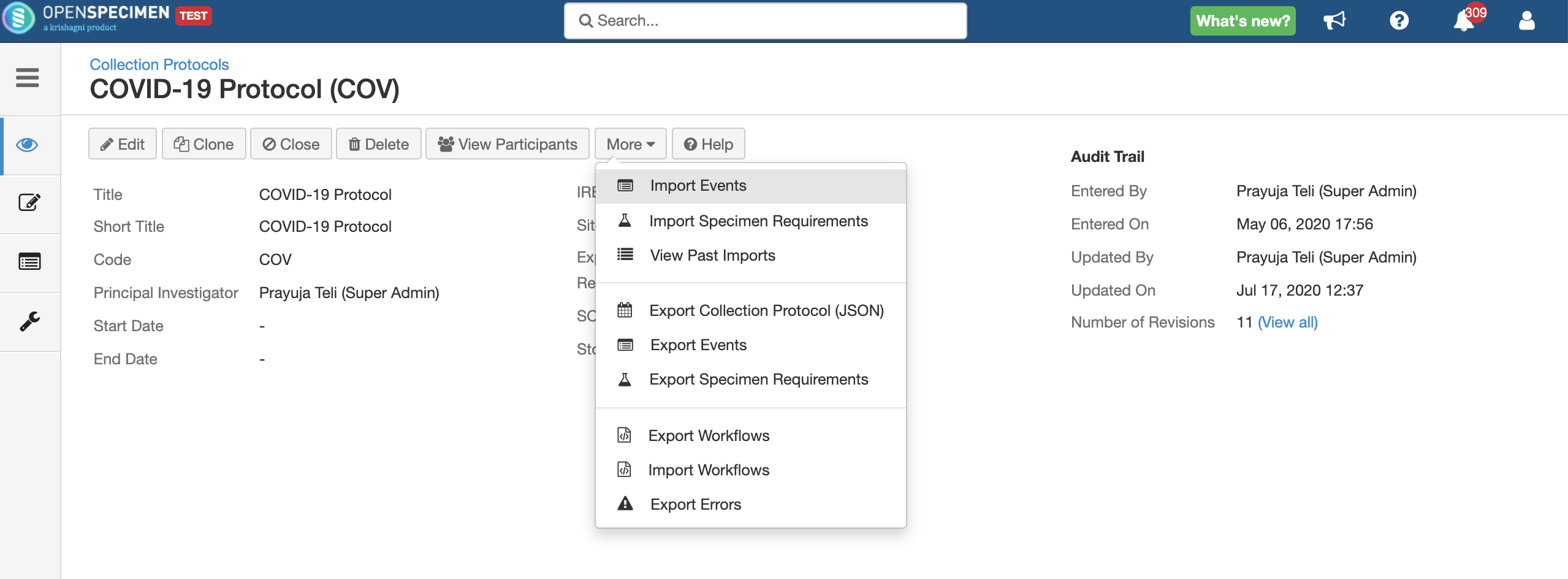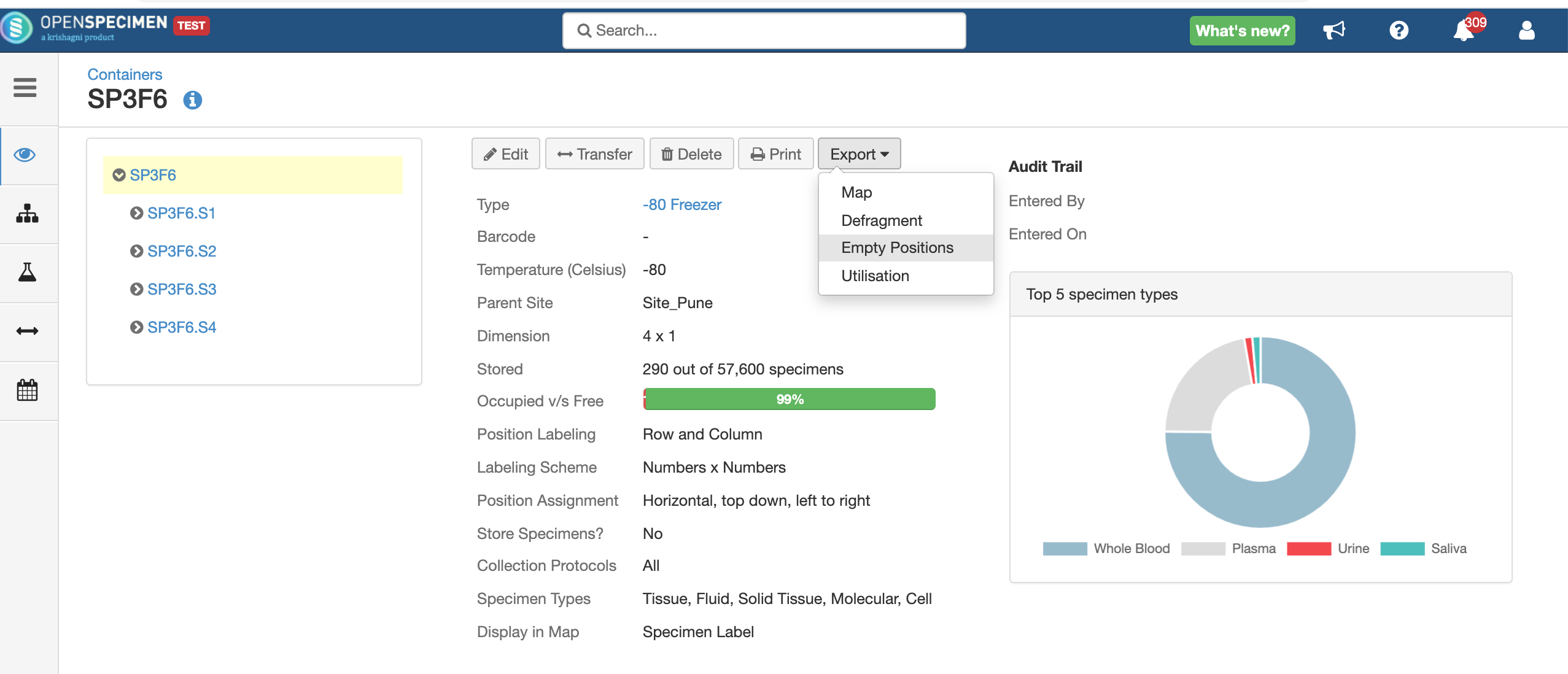Introduction
We are happy to announce that v7.1 is ready for download! As always, it has new features, improvements, and bug fixes selected based on customer feedback.
New features include:
- Import Collection Protocols via CSV
- New Container Reports: Utilisation and Empty positions
- Order module enhancements
- Rapid Data Entry plugin improvements
- Many bug fixes and usability enhancements
Download
Version | Link | Questions |
|---|---|---|
| Enterprise | Contact support team | support@krishagni.com |
| Community | Source Code GitHub link | forums.openspecimen.org |
Software/Hardware requirements
Review this page before attempting to upgrade for any changes: Software/Hardware Requirements.
Import Collection Protocols (CP) via CSV
Inputs from: Murdoch Children's Research Institute (Australia)
You can now create and edit CPs via CSV import. This is useful to import legacy data, interface with an external app, or edit large CPs.
The option is available within the protocol overview page as below:
To make edits to existing protocol events or requirements, you can use 'Export Events' or 'Export Specimen Requirements'. This will download a CSV file which can be edited and imported back.
For more details, refer to 'Collection Protocol CSV Import' page.
New Container Reports: Empty Slots and Utilisation
Inputs from: University of Pittsburgh
To better utilise freezers, you can check the storage details of the freezer or individual containers within it. In v7.1, we have added two new reports to help with this.
- Empty Positions: This report will give the list of all empty locations. This is useful if you want to check empty positions to consolidate the freezer. Sample report - EmptyPositionsReport.csv
- Utilisation: This report gives counts of stored specimens vs empty slots for every container in the hierarchy. Sample report - UtilisationReport.csv
Both these reports can be generated at any level i.e. freezer, rack, box etc.
For more details, refer to 'View/Export container content'.
Order & Shipment Enhancements
Inputs from: Washington University (USA) and others using Orders and Shipments module.
Below are some usability enhancements done in the Order module:
- Distribute up to 10,000 specimens from query results
- Delete specimens from the cart after order is processed
- Orders can now be edited after saving. Below fields are editable:
- Name
- Receiving Institute
- Receiving Site
- Requestor
- Execution Date
- Courier Tracking URL
- Sender comments
- Custom fields at the order level
- Shipments can be edited after it has been received. Below fields are editable:
- Shipment name
- Tracking URL
- Courier name
- Sender/receiver comments
- Shipped and received dates
- Received quality
Hide Collection/Received Event Details (JSON)
Inputs from: Columbia University (USA) & Telethon Kids (Australia)
Sometimes, the received event details is not available during collection. Or the collection event details could be different for different specimens.
Using JSON, you can hide the collection and/or received event in the collection step. You can either configure it in the n'th step (to collect different values for different specimens) or the lab staff can enter the received event details later after the specimens are received in the lab.
Refer to 'Configure specimen collection page(nth Step)' for more details.
Rapid Data Entry (RDE) Plugin Enhancements
Inputs from: Telethon Kids (Australia)
RDE allows you to enter multiple participants, visits and specimens at once. This is useful for high throughput collections. In v7.1, there are new usability enhancements to collect planned specimens in a "wizard-like" mode.
For more details, refer to 'Additional Data Entry Modes(RDE/SDE)'.
All Improvements and Bugs
Needs Jira login to view the below table.


